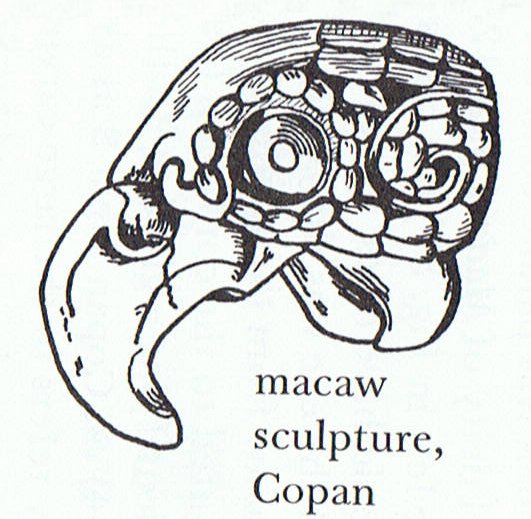|
TRANSLATIONS
To repeat, the two 'holes' enabling sun (the monkey) to enter and leave are located with 10 months in between the only two month glyphs with 'flaring tops' (Tzek and Pax), but moon seems to have a broader span with 10 months à 28 nights, determined by Zotz and Vayeb:
The single black 'pillar' in Uo presumably signifies the first (black and fruitful) part of the year, while the two black 'pillars' in Pax could refer to a 2nd part characterized by the opposite. Because they may represent vacant spaces in the tun wooden log drum:
Wood is a symbol for fire, and the empty openings in the log drum illustrate the absence of fire (light, sun, monkey). Pax is a name which suggests 'separation', i.e. the sun monkey has left:  I imagine this to be a picture of a monkey, but you never know, it may be a fish or a jaguar or something else - probably a composite beast. The 'flaring top' together with the 3 prominent black dots identifies it with Pax. But the drum does not sound until Vayeb, I guess, the glyph of which also can be regarded as a picture of the log drum. With the important difference of there being 2 white central 'pillars' instead of 1 as in Pax - exactly as in the Aztec drum. Now to the macaw observed in the glyphs and pictures. This one is interesting:  We recognize the dotted circle around the eye and the 'mouth spiral' from the elephants (cfr also the similar sign in the Pax 'sun monkey' above). There are 17 dots. The composition of the glyph evidently has a left and a right part, the 'beak' and the 'head'. The beak of a turtle and the beak of a macaw is what units them, I think. Moreover, I perceive a similarity in form and meaning between the beak and Manik, the sign used in the glyph for west ('death'),  The right, 'head', part in the macaw glyph could, I guess, suggest an ear. Eyes are of no use when sun has left. The black 'spiral eye' ought to be an ear. Elephants have very large such:  I suggest macaw symbolizes the dark time after Pax. But I still cannot see anything but a turtle in the Kayab glyph. |
|||||||||||||||||||||||||||||||||||||||||||||||||||







